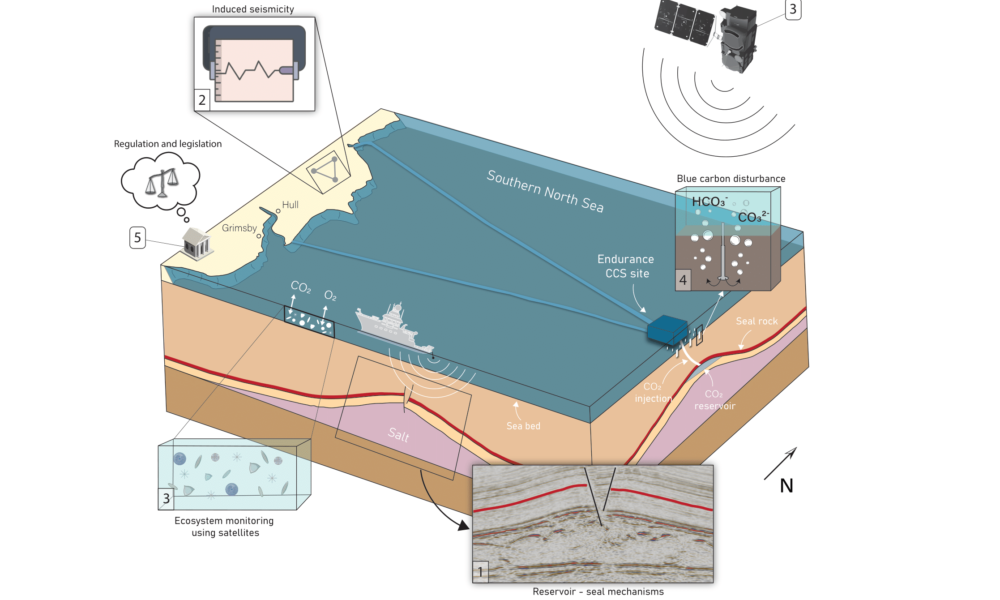What do we need to know to safely store CO2 beneath our shelf seas? Reports published
Associated Sprints
Recent News
- Oxford Real Farming Conference
- Reckoning with Regeneration
- NOW CLOSED | Agile Initiative Science-to-Policy Project Fund

This Sprint research project has now concluded, with the team so far producing three major outputs addressing CO2 storage beneath shelf seas. In Rickaby et al’s pre-print paper “Interactions of CO2 with Sedimentary Blue Carbon: The Fate of Leaked CO2 from a Geological Storage Site”, the authors assess the potential for disruption of blue carbon stored in sediments, and interactions of leaked CO2 with that sedimentary blue carbon above a sub-seafloor geological CO2 storage site.
The work which led to this paper is detailed in the Sprint’s research report Filling in evidence gaps for the safe deployment of offshore Geological Carbon Storage. In this report, the authors emphasise that CO2 capture and storage is a necessity to stop global warming. To answer the question “What do we need to know to safely store CO2 beneath our shelf seas?” the research team looked at the Endurance reservoir in the North Sea, which aims to begin storing carbon before 2030. This report contains key recommendations for industry and policy.
And finally, the team have produced the policy brief Addressing regulatory challenges for offshore Geological Carbon Storage in the UK. In this brief, the authors address opportunities available to streamline legislation, regulation and policy surrounding access to CO2 storage on the UK offshore continental shelf.
To read more about the Sprint, or to get in touch with the team, visit the CO2 Storage Sprint page.


